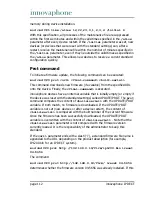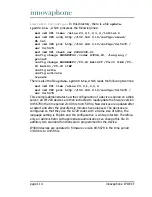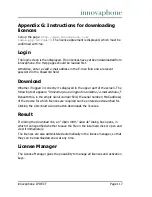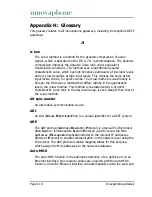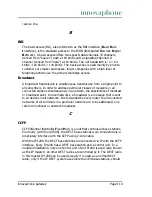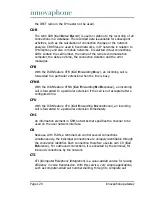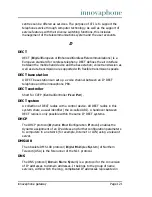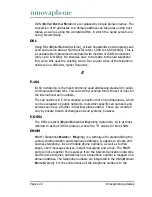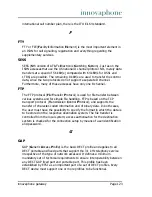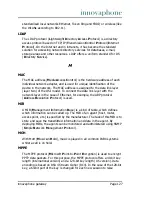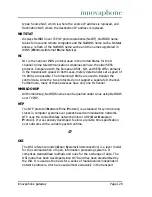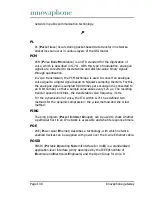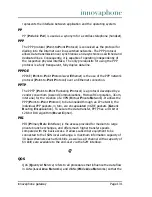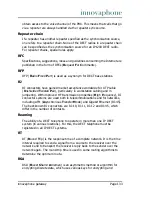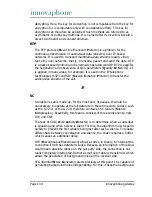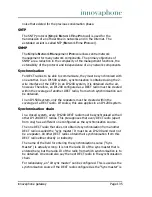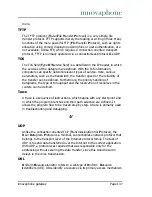
Page 122
innovaphone gateway
DDN (
D
otted
D
ecimal
N
otation) are replaced by simple domain names. The
conversion of IP addresses to a domain address can take place using host
tables, as well as using the worldwide DNS, in which the name servers are
set up hierarchically.
DSL
Using DSL (
D
igital
S
ubscriber
L
ine), private households and companies can
send and receive data at high transfer rates (1,000 to 16,000 kbit/s). This is
a considerable improvement compared with modem or ISDN connections
(only up to 64 kbit/s). No changes have to be made to the laid telephone
line, since DSL uses the existing two to four copper wires of the telephone
network on a different, higher frequency.
E
E.164
E.164 numbering is the most commonly used addressing standard in public
communication networks. This call number schema forms the set of rules for
the international call numbers.
The call numbers in E.164 comprise a maximum of 15 decimal places, which
can be evaluated by public networks. Subscriber-specific call numbers and
services can have a further 40 decimal places added. These are recorded
only by private branch exchanges and end systems, however.
E-DSS1
The DSS1 protocol (
D
igital
S
ubscriber
S
ignalling System No.
1
) is at times
referred to as the E-DSS1 protocol, where the "E" stands for Euro ISDN.
ENUM
ENUM (T
e
lephone
Num
ber
M
apping) is a technique for standardising the
various communication and telephone addresses. It applies to private and
business telephone, fax and mobile phone numbers, as well as to Web
pages, short message services, instant messaging and e-mail. The ENUM
protocol links together the resources from the telecommunication networks
and from the Internet, and defines how a telephone number is mapped on a
domain address. The telephone numbers are integrated in the DNS (
D
omain
N
ame
S
ystem). For the conformance of the telephone numbers to the





